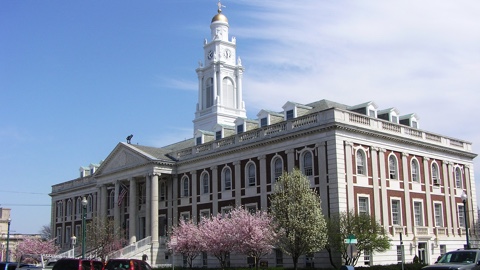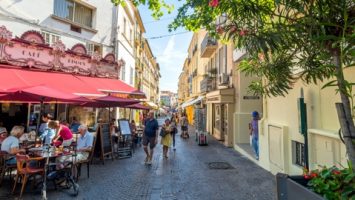
In 2018, four projects articulated such a clear plan and vision for a smart future that the Smart 50 Awards committee included them in a special category: horizons. One of those winners, The Schenectady Smart City Report, represented by Schenectady Mayor Gary McCarthy, spoke with us about what it means to work toward the goal of smart governance.
“The Schenectady Smart City Report is a tool to guide our local governments’ understanding and momentum of smart city initiatives on a departmental and city-wide level. This report not only helps city employees understand projects outside of the scope of their daily work but also helps residents, businesses, and other local communities understand details of our initiatives enabling them to provide direct feedback and be more proactive. The report helps us communicate our collective visions, set accountable and transparent goals, create a platform that will help the City of Schenectady share data and associated trends, and open up dialogue for potential solutions we are not yet aware of. The concept of a “smart city” is still a somewhat undefined term, and as we progress towards increasing operational efficiencies and more effective delivery of municipal services, one of the most important things we can do is have an open line of communication with our citizens. The 2017 Schenectady Smart City Report established a base format for this objective.”
Q: What does the term ‘smart city’ mean to you, and how does your project contribute to a larger smart city vision?
A: Smart City initiatives represent the utilization of data and technology to improve the effectiveness of the delivery of municipal services to our residents and those who visit and work in our City. The 2017 Schenectady Smart City Report contributes to the larger smart city vision by creating a foundation for all department heads and City staff to conceptualize the long-term visions of initiatives outside their personal sphere of influence and understand the importance of the role they play in making that collective vision possible. Although specific goals may look different for any given community, there is a commonality amongst all of them; the collective vision of a community and where it aspires to be in the future is intertwined with our constituents’ thoughts, beliefs, and perceptions of the present and their ability to actively contribute to the goals we have established.
Q: Why is the implementation of your project transformational in our current society?
A: General Electric Co. settled in the City of Schenectady 125 years ago and transformed the world. Today, the City is working with GE, National Grid, AT&T, Cisco, Presidio, Cimcon Lighting and other local partners to implement a city-wide deployment of ‘Smart City’ technology as we convert our streetlights to LED. We hope this project and others in Schenectady will create a replicable model for other government entities across New York State and hopefully the country. In addition, an extremely important step in the long-term vision we have for Smart Cities lies in our ability to understand how data, much of which is already being collected, can be used in a way that helps breaks down communication silos. This will ultimately help us integrate the operations of various departments and analyze the data we collect to solve problems and improve the quality of life for our residents.
Q: What advice did you receive along the way that helped you complete your winning project?
A: Our 2017 Smart City Report could not have been possible without the valuable input from our Schenectady Smart City Advisory Commission, made up of local business leaders and community stakeholders to provide suggestions, guidance, and practicality in the implementation of our Smart City visions. The Advisory Commission constructed a comprehensive roadmap, which was incorporated into our Smart City Report, which has helped them guide their recommendations to the City. A local community with an ample amount of heavily engaged stakeholders has also encouraged and fostered an environment rich in innovation and creativity. The support we receive from our local community is a vital piece in reaching the full potential of our goals.
Q: What advice would you give a city community or a solution provider looking to implement a municipal-level project?
A: By engaging in many different smart city projects, we have built upon more than fifty partnerships with private companies, educational institutions, non-profits, and other governments and agencies. These partnerships and the engagement with community stakeholders and business leaders are critical to the success of any ‘smart city’ initiative. Having data is important, but having good data and using this data to improve the quality of life for residents by identifying specific problems and potential resolutions should be a primary goal of any Smart City initiative. You will find that some of this data is likely already being collected, whether internally or externally, that can help you analyze a given problem and seek efficient and sustainable solutions.
Q: What does it mean to you to win the Smart 50 Awards?
A: Winning the Smart 50 Horizon Award is a tremendous opportunity to share the progress we’ve made in our Smart City initiatives and meet with other communities to share experiences, learn from each other, and find ways to improve the quality of life for our residents, visitors, and workers. We’re excited to be a part of this dynamic program that I believe will make everyone more informed, educated, and motivated community stakeholders. We would like to sincerely thank Smart Cities Connect for this honor and the ability to showcase our 2017 Smart City Report, which was the result of extensive work by dozens of stakeholders throughout the City and New York State’s Capital Region.


